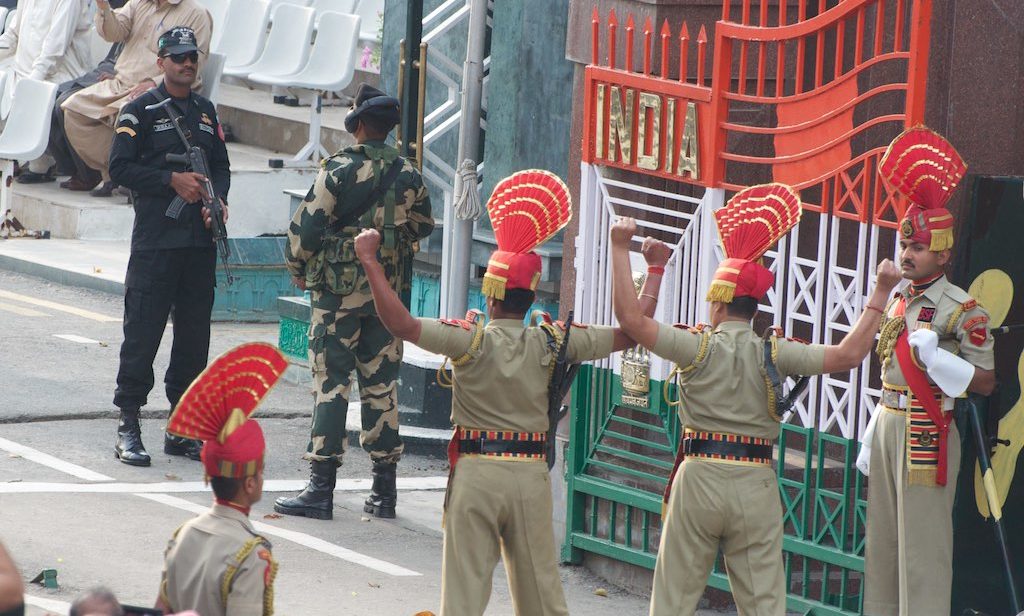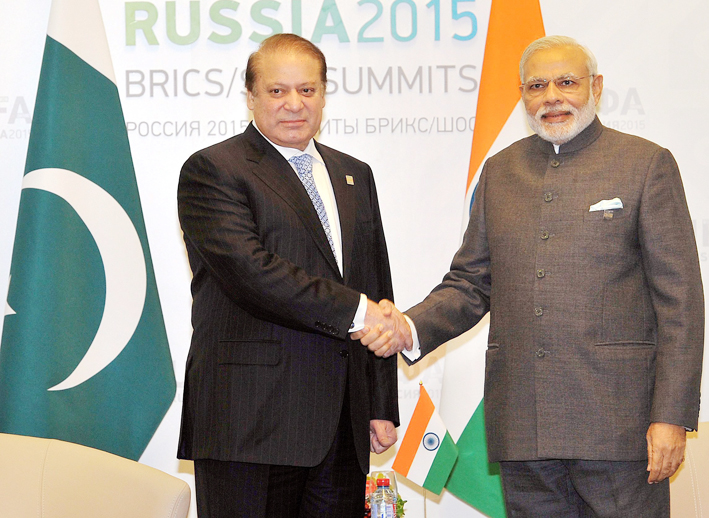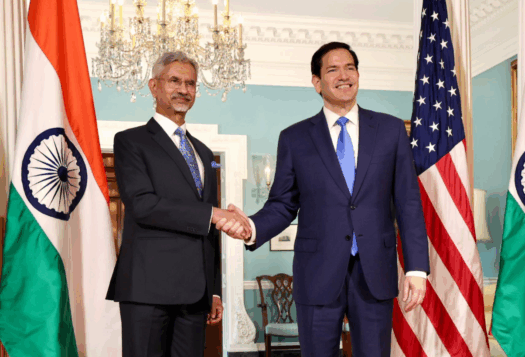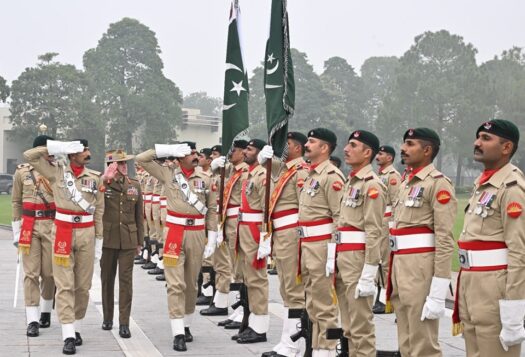
Imagine this chilling scenario: “In 2017, a group of young men hailing from Pakistan conduct a terrorist attack in a major Indian city killing hundreds of people and severely damaging an iconic Indian landmark. While Pakistani authorities initially deny any direct or indirect involvement in the attack, and insist that in recent years they have exerted themselves to tame militant groups, Indian officials declare that they have intelligence tying the attackers to a group with infrastructure in Pakistan that is, or should be, known to Pakistani security officials.” What could happen next is alarming – in George Perkovich and Toby Dalton’s new book Not War, Not Peace?: Motivating Pakistan to Prevent Cross-Border Terrorism, the authors caution against this scenario leading to the possibility of both countries mobilizing their militaries, risking a full-scale war between the two nuclear-armed neighbors.
In real life, India’s reaction to terrorism emanating from Pakistan has been less dramatic. After the 2008 Mumbai attacks, the Congress-led government of Prime Minister Manmohan Singh exercised no ‘hard options’ and instead launched a diplomatic campaign to name and shame Pakistan, as the authors themselves note in the book. After the 2001 Parliament attack, the BJP-led government of Prime Minister Atal Bihari Vajpayee responded with massive troop mobilization but avoided military escalation. Both provocations were serious enough for India’s political and defense establishments to at least consider military retaliation, and yet in neither of the two cases did India go to war with Pakistan.
Presentation of the Argument and Critiques
With conventional warfare ruled out, the question that Perkovich and Dalton pose is: What else can India do to motivate Pakistan to prevent such incidences of cross-border terrorism? The authors specifically look at five options that India is likely to consider vis-à-vis Pakistan: (I) An army-centric proactive incursion into Pakistan; (II) a limited airborne operation against targets directly associated with terror organizations; (III) a covert operation fomenting insurgency in Pakistan; (IV) innovations in the nuclear doctrine that would complement the previous three options, and (V) a strategy of non-violent compellence.
In the army-centric option, the authors focus on what is popularly known as the Cold Start doctrine. They rightly highlight reasons why India should ignore this path including the fact that it simply does not have the military capabilities at this point to pursue this option with any degree of success. Also, the escalatory risks associated with it are extremely high, since it is difficult to imagine that Pakistan would not respond to an invasion of its territory. As the authors note, “[…] If Indian leaders authorize a proactive response to another terrorist attack, the Indian forces are unlikely to achieve the quick splendid victory that proponents of the strategy imagine.”
Next, the authors critique the case for airborne operations against select terror targets. This section is a must-read for those in India advocating for the Modi government to order a U.S.-style hit on Hafiz Saeed and Dawood Ibrahim in Pakistan. The authors note that while this seems appealing, especially since the United States and Israel already go for such options in their counterterrorism policies, they rightly argue that “India does not possess offensive capabilities remotely comparable with those of the US and Israel.”
The third segment on covert operations, makes for a timely read given that Prime Minister Modi recently emphasized Pakistan’s abuses in Balochistan in response to Pakistani criticisms of India’s human rights record in Kashmir. As the authors note, Ajit Doval, three months prior to his appointment as Modi’s National Security Advisor, had also said: “You (Pakistan) can do one Mumbai and you may lose Balochistan.” With this in mind, the authors assess the pros and cons of such a strategy wherein India facilitates covert actions in Pakistan in response to a terrorist attack on Indian soil. In the end, they argue that risks outweigh the benefits. This is debatable, depending on the scope and scale of Indian action. For example, if India is able to reasonably improve its ground intelligence and covert strike capabilities, attacking targets in Pakistan-administered Kashmir may be considered. Similarly, India could also consider upping the ante in Balochistan – this need not translate into instigating a full-scale Baloch rebellion but just enough to send the message that there is a price to be paid for mischief-making. That said, even those who advocate for such operations will do well to remember that Pakistan’s proxy war strategy has failed in its primary objective—to extract from India any major concessions on Kashmir.
The fourth option on nuclear capabilities has similar operational issues of the sort that plague the previous options, though the authors’ suggestion that India should stick with its no first use policy is debatable. As defense expert Abhijit Iyer-Mitra explains, “India has diluted the concept (of NFU) to the point of absurdity, with dangerous consequences: a buildup of its conventional forces, which has caused Pakistan to harden its nuclear stance.”

This brings us to the fifth option of non-violent compellence, which the authors argue would be “more cost-effective to turn the people and authorities of Pakistan and the international community against actors who would conduct terrorism in India.” This is where the book begins to falter. The authors suggest that since India does not have any real hard power options, it should look at soft power options to effectively isolate Pakistan on the global stage. While this can surely serve as one of many levers that India turns against Pakistan, the authors fail to provide a convincing argument for how this would actually change Pakistani behavior; the authors accentuate this point when they themselves note that the Pakistani state has only limited control over anti-India groups such as Lashkar-e-Taiba. Thus, it is unclear how these soft power options would create substantive differences from the status quo.
They argue that the restraint of Indian leaders after the 2001 and 2008 terrorist attacks “resulted in a Pakistani sense of loss.” But the point is that this rather vague notion of loss has not had any significant impact whatsoever on Pakistan’s India policies—much like the BDS movement against Israel, which the authors say has caused “deep concern” in Jerusalem but has not changed the way Israel approaches Palestinian terror.
The authors also consider the possibility of India lobbying for economic sanctions against Pakistan with an emphasis on getting American and Chinese support. Even if India were to achieve American support, it is extremely difficult to imagine China would ever support these sanctions because of its close relationship with Pakistan. And without Chinese support, such a suggestion is ultimately not a realistic one.
Concluding Thoughts
This brings us back to the question: What can India do to motivate Pakistan to prevent such attacks? Some 300 pages later, the answer seems to be: not much. India would struggle to mobilize its hard power against Pakistan; even if India did use hard power, it would risk escalation and nuclear warfare. The authors push for the use of soft power, but this seems like a mostly ineffective solution with no real change to the status quo.
Perhaps, the answer on how to change Pakistani behavior lies in the proposition that India should not try to change it in the first place. India could simply focus on improving its resilience by strengthening its borders and improving its homeland security apparatus to reduce the odds that terrorists might cross into India.
Editor’s note: In this four-part series, SAV contributors Mayuri Mukherjee, Muhammad Faisal, Fahd Humayun, and Tanvi Kulkarni review authors George Perkovich and Toby Dalton‘s new book Not War, Not Peace?: Motivating Pakistan to Prevent Cross-Border Terrorism (Oxford University Press, 2016). Read the entire series here.
***
Image 1: Jon Connell, Flickr
Image 2: Raajan, Flickr


